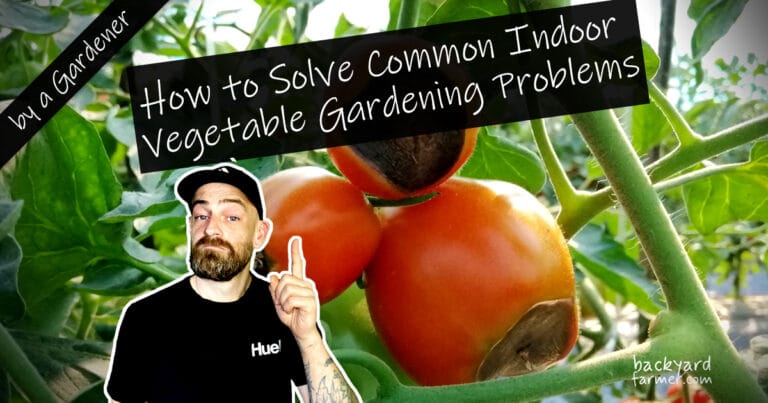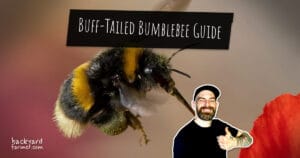Table of contents
- Introduction: Unlock the Secrets to a Thriving Indoor Vegetable Garden
- Insufficient Light for Indoor Vegetables
- Poor Soil Quality and Nutrient Deficiencies
- Overwatering or Underwatering Issues
- Indoor Pests and Diseases
- Temperature and Humidity Challenges
- Conclusion: Cultivating a Thriving Indoor Vegetable Garden
Introduction: Unlock the Secrets to a Thriving Indoor Vegetable Garden
Imagine stepping into your home and being greeted by the sight of lush, green vegetables thriving in every corner, ready to be harvested and enjoyed. Indoor vegetable gardening not only brings the joy of fresh, homegrown produce to your table year-round but also transforms your living space into a vibrant, healthy oasis.
Indoor vegetable gardening is an excellent way to enjoy fresh produce year-round, even in small spaces. Whether you’re growing crisp lettuce, juicy tomatoes, or fragrant herbs, the convenience and satisfaction of cultivating your own food indoors are unmatched.
However, as rewarding as it is, indoor gardening is not without its challenges. Unlike outdoor gardens, where nature provides light, air circulation, and a balanced ecosystem, indoor environments require careful management and a keen understanding of the unique conditions that affect plant growth. From insufficient light that leads to leggy, weak plants to the ever-present threat of pests and diseases that can devastate your hard work, the obstacles can sometimes feel overwhelming.
But don’t let these challenges discourage you! With the right knowledge and a few smart strategies, you can overcome these hurdles and create a thriving indoor garden that not only survives but flourishes. This guide is here to empower you, providing practical solutions to the most common problems you’ll face as an indoor gardener. Whether you’re a seasoned green thumb or just starting your gardening journey, you’ll find the insights and tips you need to keep your plants healthy, productive, and vibrant.
Insufficient Light for Indoor Vegetables
Importance of Light for Growth
One of the biggest challenges in indoor vegetable gardening is ensuring that plants receive adequate light. Vegetables require light to perform photosynthesis, the process by which they convert light energy into food. Without sufficient light, plants struggle to grow, leading to weak, leggy stems, pale leaves, and reduced yields. In an indoor environment, where natural sunlight is limited or inconsistent, providing adequate light becomes even more essential for the success of your indoor garden.
For the best results in your indoor vegetable gardening, check out this guide on the top LED grow lights for 2024—perfect for optimizing plant growth and yield.
Signs of Insufficient Light
Understanding the signs of insufficient light can help you quickly identify and address lighting issues before they severely affect your plants. Common indicators include:
- Leggy Growth: Stems become elongated as plants stretch towards the nearest light source.
- Pale or Yellow Leaves: Lack of chlorophyll production leads to lighter-colored leaves.
- Slow Growth: Vegetables grow much slower than expected, or their growth stalls entirely.
- Poor Fruit or Vegetable Production: Low light levels result in fewer flowers, which leads to a reduced harvest.
- Leaf Drop: In some cases, plants may start shedding leaves as they struggle to maintain their energy levels.
Solutions: Types of Grow Lights, Placement Tips, and Optimal Light Duration
To ensure your indoor vegetables receive the light they need, consider the following solutions:
Types of Grow Lights
| Grow Light Type | Ideal For | Energy Efficiency | Heat Production | Optimal Distance from Plants | Recommended Use |
|---|---|---|---|---|---|
| Fluorescent Lights | Leafy greens, herbs | High | Low | 6-12 inches | Small indoor gardens, low-light plants |
| LED Grow Lights | All vegetable types | Very High | Very Low | 12-24 inches | Versatile for all plants, especially fruiting vegetables |
| HID Lights (MH/HPS) | Fruiting vegetables | Moderate | High | 2-4 feet | Large-scale setups, high-light plants |
Placement Tips
Positioning and adjusting your grow lights is crucial for maximizing plant health. The following tips will guide you:
| Tip | Description |
|---|---|
| Distance Adjustment | Adjust grow light height as plants grow to maintain optimal light levels. |
| Reflective Materials | Use Mylar or aluminum foil to enhance light coverage. |
| Timer Use | Set up a timer to maintain consistent light/dark cycles. |
Optimal Light Duration
Different vegetables require varying amounts of light for optimal growth. Use the table below as a reference for setting up your grow lights:
| Vegetable Type | Light Duration (Hours/Day) | Light Intensity |
|---|---|---|
| Leafy Greens (e.g., Lettuce, Spinach) | 12-14 hours | Low to Medium |
| Fruiting Vegetables (e.g., Tomatoes, Peppers) | 14-16 hours | Medium to High |
| Herbs (e.g., Basil, Parsley) | 12-14 hours | Medium |
Example Use Case
| Scenario | Recommended Grow Light | Reason |
|---|---|---|
| Growing leafy greens in a small apartment | Fluorescent Lights | Low heat, sufficient light for leafy plants, energy-efficient |
| Starting seedlings for an outdoor garden | LED Grow Lights | Versatile light spectrum, energy-efficient, low heat |
| Cultivating fruiting vegetables in a large indoor space | HID Lights (HPS) | High-intensity light, supports flowering and fruiting |
Poor Soil Quality and Nutrient Deficiencies
The Role of Soil in Indoor Gardening
Soil is the foundation of any successful indoor vegetable garden. It provides the essential nutrients, water retention, and structure that plants need to grow and thrive. Unlike outdoor gardens, where soil quality can be naturally enriched by organic matter and external environmental factors, indoor gardening relies heavily on the quality of the soil mix you use. Poor soil quality can lead to stunted growth, nutrient deficiencies, and ultimately, lower yields. Therefore, selecting the right soil and maintaining its quality is crucial for a thriving indoor vegetable garden.
Common Nutrient Deficiencies in Indoor Setups
Indoor gardens are often more susceptible to nutrient deficiencies due to the limited and controlled environment. The most common nutrient deficiencies that affect indoor vegetables include:
- Nitrogen Deficiency:
Signs: Yellowing of older leaves, stunted growth, and weak stems.
Importance: Nitrogen is vital for leafy growth and overall plant vigor. - Phosphorus Deficiency:
Signs: Dark green or purplish leaves, slow growth, and poor root development.
Importance: Phosphorus is crucial for root development and flower/fruit production. - Potassium Deficiency:
Signs: Yellowing or browning of leaf edges, weak stems, and poor disease resistance.
Importance: Potassium enhances disease resistance, water uptake, and overall plant health. - Calcium Deficiency:
Signs: Blossom end rot in tomatoes and peppers, distorted leaves, and weak stems.
Importance: Calcium is essential for cell wall structure and overall plant strength. - Magnesium Deficiency:
Signs: Interveinal chlorosis (yellowing between the veins) on older leaves.
Importance: Magnesium is a key component of chlorophyll and is essential for photosynthesis.
Solutions: Soil Selection, Fertilization Tips, and Organic Amendments
Soil Selection
Choosing the right soil mix is the first step to ensuring your indoor vegetables have a healthy growing medium. Consider the following factors when selecting soil:
- Soil Texture: Look for a well-draining, loose, and airy soil mix. A good indoor gardening soil typically contains a blend of peat moss, vermiculite, and perlite. This combination provides the right balance of water retention and drainage.
- Soil pH: Ensure the soil pH is suitable for the vegetables you’re growing. Most vegetables prefer a slightly acidic to neutral pH range of 6.0 to 7.0. You can test the pH of your soil using a pH meter or test kit and adjust it as needed using lime (to raise pH) or sulfur (to lower pH).
- Pre-Mixed vs. DIY Soil Mix: Pre-mixed potting soils designed specifically for vegetables often come enriched with essential nutrients and are ready to use. However, creating your own mix allows you to tailor the soil to your specific plants’ needs, ensuring optimal growth conditions.
| Soil Type | Ideal For | Key Characteristics |
|---|---|---|
| Pre-Mixed Potting Soil | General vegetable gardening | Balanced nutrients, good drainage, convenient |
| DIY Soil Mix (Peat, Vermiculite, Perlite) | Custom vegetable needs | Control over composition, tailored nutrient balance |
| Compost-Enriched Soil | High-nutrient-demanding plants (e.g., tomatoes) | High organic content, improves soil fertility and structure |
Fertilization Tips
Even with the best soil, indoor vegetables often need additional fertilization to meet their nutrient requirements. Here’s how to approach fertilization:
- Use Balanced Fertilizers: Choose a balanced fertilizer with an equal ratio of N-P-K (Nitrogen, Phosphorus, Potassium), such as a 10-10-10 or 20-20-20 mix, especially during the growth phase. For fruiting stages, a fertilizer higher in phosphorus and potassium (e.g., 5-10-10) can be beneficial.
- Liquid vs. Granular Fertilizers: Liquid fertilizers are quickly absorbed and can be easily applied during watering, making them ideal for fast-growing plants. Granular fertilizers release nutrients slowly and are suitable for providing a steady nutrient supply over time.
- Fertilization Frequency: Regular feeding is essential for indoor vegetables. Typically, fertilizing every two weeks during the growing season is sufficient. Be cautious not to over-fertilize, as this can lead to nutrient imbalances and salt buildup in the soil.
| Fertilizer Type | Application Method | Best Use Case |
|---|---|---|
| Liquid Fertilizer | Dilute and water plants with it | Quick nutrient uptake, especially for fast-growing plants |
| Granular Fertilizer | Mix into soil or sprinkle on top and water in | Slow-release, long-term nutrient supply |
| Organic Fertilizer (e.g., compost tea, fish emulsion) | Water or mix into soil | Improves soil structure, adds organic matter |
Organic Amendments
Organic amendments improve soil quality by adding essential nutrients and enhancing soil structure. Here are some commonly used organic amendments:
- Compost: Rich in nutrients, compost improves soil fertility and water retention. It’s ideal for enriching soil before planting or as a top dressing throughout the growing season.
- Worm Castings: These provide a slow-release source of nitrogen and beneficial microorganisms that improve soil health. Worm castings are especially useful for leafy greens and other nitrogen-loving plants.
- Bone Meal: High in phosphorus, bone meal is excellent for promoting root development and flowering. It’s best used in the early stages of growth or when preparing the soil for planting.
- Epsom Salt (Magnesium Sulfate): A great source of magnesium and sulfur, Epsom salt can be mixed into the soil or dissolved in water for foliar feeding. It helps prevent magnesium deficiency, especially in plants like tomatoes and peppers.
| Organic Amendment | Primary Nutrients Provided | Best Used For |
|---|---|---|
| Compost | Balanced nutrients | Overall soil fertility, water retention |
| Worm Castings | Nitrogen, microorganisms | Leafy greens, improving soil structure |
| Bone Meal | Phosphorus | Root development, flowering plants |
| Epsom Salt | Magnesium, Sulfur | Preventing magnesium deficiency, improving chlorophyll production |
Overwatering or Underwatering Issues
The Delicate Balance of Watering
Proper watering techniques are essential for successful indoor vegetable gardening, helping to avoid overwatering and underwatering.Watering is one of the most critical aspects of indoor vegetable gardening, yet it is also one of the most challenging to master.
The balance between overwatering and underwatering can be delicate, as too much or too little water can quickly lead to unhealthy plants. Overwatering often suffocates plant roots, leading to root rot, while underwatering deprives plants of the moisture they need for essential functions like nutrient absorption and photosynthesis. Understanding how to maintain the right watering balance is crucial for the health and productivity of your indoor vegetable garden.
Signs of Overwatering vs. Underwatering
Recognizing the symptoms of overwatering and underwatering is the first step in correcting watering issues:
- Signs of Overwatering:
- Yellowing Leaves: Often starting with the lower leaves, they may turn yellow and eventually fall off.
- Wilting Despite Wet Soil: Plants may appear wilted even when the soil is moist, indicating root problems.
- Mold or Fungus Growth: White mold or green algae on the soil surface is a sign of excessive moisture.
- Root Rot: A foul smell from the soil or blackened, mushy roots indicate severe overwatering.
- Signs of Underwatering:
- Crisp, Dry Leaves: Leaves may become dry and crispy, especially at the edges.
- Wilting Due to Dry Soil: Plants wilt when the soil is too dry, with leaves becoming limp and drooping.
- Slow Growth: Lack of adequate water can stunt plant growth and lead to smaller, less vibrant leaves.
- Leaf Drop: Plants may shed leaves to conserve moisture when water is scarce.
Solutions: Proper Watering Techniques, Drainage, and Using Moisture Meters
Proper Watering Techniques
Adopting the correct watering techniques is essential to avoid both overwatering and underwatering:
- Watering Frequency:
The frequency of watering depends on the plant type, soil mix, and environmental conditions such as temperature and humidity. Generally, water when the top inch of soil feels dry to the touch. Avoid a strict schedule, as the water needs can vary day by day. - Watering Depth:
Water thoroughly until water runs out of the drainage holes, ensuring that the entire root zone is hydrated. Shallow watering encourages shallow root growth, which can make plants more susceptible to stress. - Watering Time:
Water your plants in the morning or early afternoon. This allows excess moisture to evaporate throughout the day, reducing the risk of mold and fungal growth. - Bottom Watering:
For plants sensitive to overwatering, consider bottom watering. Place pots in a tray of water and allow them to absorb moisture through the drainage holes. This method encourages strong root growth and prevents soil compaction.
| Watering Technique | Description | Best Used For |
|---|---|---|
| Top Watering | Watering from the top until soil is thoroughly moist | Most plants, ensuring even distribution of moisture |
| Bottom Watering | Allowing plants to absorb water from the bottom up | Plants sensitive to overwatering, preventing soil compaction |
| Deep Watering | Watering until water drains out, ensuring deep root hydration | Root development, drought-tolerant plants |
Drainage
Good drainage is essential to prevent water from accumulating at the bottom of pots, which can lead to root rot. Here’s how to ensure effective drainage:
- Use Pots with Drainage Holes:
Always choose containers with sufficient drainage holes. If your pots lack drainage, consider adding holes or using a layer of gravel or small stones at the bottom to enhance drainage. - Well-Draining Soil:
Select a soil mix that offers good drainage while retaining enough moisture. A mix containing perlite, vermiculite, or sand can help prevent the soil from becoming waterlogged. - Elevate Pots:
Place pots on trays or saucers with ridges to keep them elevated above excess water. This prevents the roots from sitting in standing water.
| Drainage Solution | Description | Importance |
|---|---|---|
| Pots with Drainage Holes | Allows excess water to escape | Prevents root rot, ensures air circulation |
| Well-Draining Soil | Soil mix that prevents waterlogging | Balances moisture retention and drainage |
| Elevating Pots | Keeping pots above excess water | Avoids roots sitting in water, enhances root health |
Using Moisture Meters
A moisture meter is a valuable tool for indoor gardeners, helping to prevent both overwatering and underwatering by providing an accurate reading of soil moisture levels:
- How to Use a Moisture Meter:
Insert the probe of the moisture meter into the soil about halfway down the pot. The meter will give a reading, usually on a scale of 1 to 10, indicating the soil’s moisture content. A reading between 4 and 6 is generally ideal for most vegetables. - Advantages of Moisture Meters:
Moisture meters take the guesswork out of watering, especially for beginners. They help ensure you’re watering based on the plant’s needs rather than a schedule, reducing the risk of overwatering or underwatering. - Choosing the Right Moisture Meter:
Look for moisture meters that provide accurate readings and are easy to use. Some advanced models also measure soil pH and light levels, offering a comprehensive tool for indoor gardening.
| Moisture Meter Feature | Benefit | Recommended Use |
|---|---|---|
| Soil Moisture Reading | Accurately measures soil moisture level | Prevents overwatering and underwatering |
| Multi-functionality | Some models also measure pH and light levels | Comprehensive tool for monitoring plant health |
| Ease of Use | Simple insertion and reading | Ideal for beginners and experienced gardeners alike |
Indoor Pests and Diseases
Common Pests and Diseases in Indoor Gardens
Indoor vegetable gardening, while protected from many outdoor elements, is not immune to pests and diseases. The controlled environment can sometimes even exacerbate these issues, as pests and pathogens thrive in the stable, warm conditions typically found indoors. Common indoor garden pests include aphids, spider mites, and fungus gnats, while diseases such as powdery mildew, root rot, and bacterial infections can also be prevalent. Identifying and addressing these issues early is crucial to maintaining a healthy indoor garden.
Prevention and Identification of Issues
Preventing pests and diseases in your indoor garden starts with vigilance and good gardening practices. Here’s how to identify and prevent the most common problems:
- Aphids:
Identification: Tiny, soft-bodied insects, usually green or black, found on the undersides of leaves.
Prevention: Regularly inspect plants, especially new ones, and keep your garden clean of debris where aphids can breed. - Spider Mites:
Identification: Minute red or yellow dots on leaves, often accompanied by fine webbing. Leaves may appear speckled or discolored.
Prevention: Maintain high humidity levels and mist plants regularly, as spider mites thrive in dry conditions. - Fungus Gnats:
Identification: Small, mosquito-like insects hovering around soil surfaces. Larvae may cause root damage.
Prevention: Allow the top layer of soil to dry out between watering and use well-draining soil to discourage egg-laying. - Powdery Mildew:
Identification: White, powdery spots on leaves, stems, and buds.
Prevention: Ensure proper air circulation around plants and avoid overhead watering to keep foliage dry. - Root Rot:
Identification: Yellowing leaves, wilting, and a foul odor from the soil; roots may appear brown and mushy.
Prevention: Avoid overwatering and ensure good drainage to prevent waterlogged soil.
| Pest/Disease | Identification | Prevention Tips |
|---|---|---|
| Aphids | Green or black insects on leaf undersides | Regular plant inspection, clean garden environment |
| Spider Mites | Red/yellow dots, fine webbing, speckled leaves | Maintain humidity, mist plants |
| Fungus Gnats | Mosquito-like insects, larvae damage roots | Let soil dry between watering, use well-draining soil |
| Powdery Mildew | White, powdery spots on leaves and stems | Ensure air circulation, avoid overhead watering |
| Root Rot | Yellow leaves, wilting, brown/mushy roots | Avoid overwatering, ensure good drainage |
Solutions: Natural Pest Control Methods, Disease Prevention, and Treatment Options
Managing pests and diseases in an indoor garden can be challenging, but natural methods are often the safest and most effective. Here are some solutions:
Natural Pest Control Methods
- Neem Oil:
Usage: Mix neem oil with water and a few drops of dish soap, then spray onto affected plants.
Effectiveness: Neem oil disrupts the life cycle of pests like aphids, spider mites, and whiteflies, acting as both a preventive measure and a treatment. - Insecticidal Soap:
Usage: Apply directly to pests, covering all plant surfaces.
Effectiveness: Insecticidal soap is effective against soft-bodied pests such as aphids and spider mites by breaking down their protective outer coating. - Beneficial Insects:
Usage: Introduce ladybugs, predatory mites, or nematodes into your indoor garden.
Effectiveness: These natural predators help control pest populations without the need for chemical treatments. - Sticky Traps:
Usage: Place yellow sticky traps near the base of plants or above soil level.
Effectiveness: Traps capture flying pests like fungus gnats and whiteflies, reducing their population.
| Natural Pest Control Method | Application | Best Used For |
|---|---|---|
| Neem Oil | Spray on plants, repeat weekly | Aphids, spider mites, whiteflies |
| Insecticidal Soap | Apply directly to pests | Soft-bodied pests like aphids and spider mites |
| Beneficial Insects | Release into garden | Controlling aphids, spider mites, soil-dwelling larvae |
| Sticky Traps | Place near plants or soil | Capturing fungus gnats, whiteflies |
Disease Prevention and Treatment Options
- Cinnamon or Baking Soda Spray:
Usage: Mix either cinnamon or baking soda with water and apply to plants.
Effectiveness: Both are effective at preventing and treating powdery mildew and other fungal diseases. - Proper Sanitation:
Method: Regularly clean your indoor garden space, remove dead leaves, and disinfect tools.
Effectiveness: Reduces the likelihood of disease spread by maintaining a clean growing environment. - Pruning and Air Circulation:
Method: Prune plants to allow better air circulation and remove any infected leaves.
Effectiveness: Helps prevent fungal diseases like powdery mildew and blight by reducing humidity around plants. - Quarantine New Plants:
Method: Isolate new plants for a few weeks before introducing them to your indoor garden.
Effectiveness: Prevents the introduction of new pests or diseases to your established garden.
| Disease Prevention/Treatment | Application | Best Used For |
|---|---|---|
| Cinnamon/Baking Soda Spray | Apply to plants to prevent/treat fungal infections | Powdery mildew, fungal diseases |
| Proper Sanitation | Clean garden, remove debris, disinfect tools | General disease prevention, reduces spread |
| Pruning/Air Circulation | Prune plants, improve airflow | Prevents fungal diseases, improves plant health |
| Quarantine New Plants | Isolate new plants before introducing to garden | Preventing pest/disease introduction |
Temperature and Humidity Challenges
The Impact of Temperature and Humidity on Indoor Vegetables
Temperature and humidity play crucial roles in the health and productivity of indoor vegetable gardens. These environmental factors directly affect plant growth, photosynthesis, water uptake, and overall plant vigor. Indoor environments often lack the natural fluctuations in temperature and humidity found outdoors, making it essential for gardeners to closely monitor and regulate these conditions. Maintaining optimal temperature and humidity levels can prevent issues such as slow growth, poor fruit set, and vulnerability to pests and diseases, ensuring your indoor vegetable garden thrives.
Signs of Temperature or Humidity Stress
Recognizing the signs of temperature and humidity stress in your indoor vegetables is key to preventing long-term damage:
- Temperature Stress:
- High Temperatures:
Signs: Wilting, leaf curling, scorched leaf edges, and flower drop.
Impact: Excessive heat can cause plants to lose water rapidly, leading to dehydration and stunted growth. In some cases, it can also inhibit fruit set and cause flowers to drop prematurely. - Low Temperatures:
Signs: Slowed growth, dark or purplish leaves, and increased susceptibility to diseases.
Impact: Cold temperatures can slow down metabolic processes, reducing nutrient uptake and making plants more prone to diseases like mildew and blight.
- High Temperatures:
- Humidity Stress:
- Low Humidity:
Signs: Dry, crispy leaf edges, leaf drop, and slow growth.
Impact: Low humidity levels can cause plants to lose moisture too quickly through transpiration, leading to dehydration and hindered growth. - High Humidity:
Signs: Mold or mildew on leaves, root rot, and increased pest activity.
Impact: Excess humidity creates a breeding ground for fungal diseases and pests, particularly in crowded or poorly ventilated spaces.
- Low Humidity:
| Stress Type | Signs | Impact on Plants |
|---|---|---|
| High Temperatures | Wilting, leaf curling, scorched leaf edges, flower drop | Dehydration, stunted growth, inhibited fruit set |
| Low Temperatures | Slowed growth, dark/purplish leaves, increased disease susceptibility | Reduced nutrient uptake, higher disease risk |
| Low Humidity | Dry/crispy leaf edges, leaf drop, slow growth | Dehydration, hindered growth |
| High Humidity | Mold/mildew on leaves, root rot, increased pests | Fungal diseases, pest infestations, poor air circulation |
Solutions: Maintaining Ideal Conditions, Using Humidifiers, and Temperature Control
Managing temperature and humidity effectively in your indoor garden involves several strategies, from monitoring conditions to using specialized equipment. Here’s how to keep your indoor vegetables comfortable and healthy:
Maintaining Ideal Conditions
- Optimal Temperature Range:
- General Guidelines:
Most indoor vegetables thrive in temperatures between 65°F and 75°F (18°C – 24°C) during the day and slightly cooler at night. Leafy greens like lettuce prefer cooler temperatures, while fruiting plants like tomatoes and peppers do well in slightly warmer conditions. - Avoiding Temperature Fluctuations:
Place your plants away from drafts, heaters, and direct exposure to HVAC vents. Sudden changes in temperature can stress plants and lead to growth problems.
- General Guidelines:
- Ideal Humidity Levels:
- General Guidelines:
Indoor vegetables generally prefer humidity levels between 40% and 60%. Leafy greens and herbs benefit from higher humidity, while fruiting vegetables can tolerate slightly lower levels. - Balancing Humidity:
If your indoor space tends to be dry, consider grouping plants together to create a microclimate with higher humidity. Conversely, ensure good air circulation in areas prone to high humidity to prevent fungal issues.
- General Guidelines:
| Condition | Optimal Range | Best Practices |
|---|---|---|
| Temperature | 65°F – 75°F (18°C – 24°C) during the day | Avoid drafts, heaters, and direct HVAC exposure |
| Humidity | 40% – 60% | Group plants to increase humidity, ensure good airflow |
Using Humidifiers
- Humidifier Selection:
- Cool-Mist vs. Warm-Mist:
Cool-mist humidifiers are generally safer for indoor environments and more energy-efficient. They help maintain consistent humidity levels without raising the temperature. Warm-mist humidifiers can also be effective but might slightly increase room temperature, which could be beneficial in cooler environments. - Size and Capacity:
Choose a humidifier that matches the size of your indoor garden space. Larger gardens will require a unit with a higher output capacity to ensure even humidity distribution.
- Cool-Mist vs. Warm-Mist:
- Placement and Maintenance:
- Proper Placement:
Place the humidifier near your plants but not directly over them to avoid water droplets forming on leaves, which can lead to fungal issues. Ensure it’s in a central location to evenly distribute moisture. - Regular Maintenance:
Clean the humidifier regularly to prevent mold and bacteria buildup, which can be harmful to your plants and indoor air quality.
- Proper Placement:
| Humidifier Feature | Recommendation | Best Used For |
|---|---|---|
| Cool-Mist Humidifier | Energy-efficient, safe for indoor use | Maintaining consistent humidity without increasing temperature |
| Warm-Mist Humidifier | Can slightly raise room temperature | Beneficial in cooler environments, small spaces |
| Regular Cleaning | Prevents mold and bacteria buildup | Ensures healthy indoor air quality and plant environment |
Temperature Control
- Using Fans and Heaters:
- Fans:
Install oscillating fans to improve air circulation, which helps regulate both temperature and humidity. Fans prevent hot or cold spots in your indoor garden and reduce the risk of fungal diseases by keeping the foliage dry. - Heaters:
In cooler environments, use space heaters with a thermostat to maintain a consistent temperature. Position heaters at a safe distance from plants to avoid overheating and ensure the heat is distributed evenly.
- Fans:
- Monitoring and Automation:
- Thermostats and Hygrometers:
Use digital thermostats and hygrometers to continuously monitor the temperature and humidity levels in your indoor garden. This allows you to make quick adjustments when conditions fall outside the optimal range. - Automated Systems:
Consider investing in a smart climate control system that can automate temperature and humidity adjustments based on real-time data. These systems can be programmed to maintain ideal conditions with minimal intervention.
- Thermostats and Hygrometers:
| Temperature Control Method | Application | Best Used For |
|---|---|---|
| Oscillating Fans | Improves air circulation, prevents hot/cold spots | Maintaining even temperature and reducing fungal risks |
| Space Heaters | Provides consistent warmth in cooler environments | Avoiding low-temperature stress in indoor gardens |
| Thermostats/Hygrometers | Continuous monitoring of temperature and humidity | Ensuring conditions remain within optimal range |
| Automated Systems | Smart control of environmental conditions | Maintaining ideal growing conditions with minimal effort |
Conclusion: Cultivating a Thriving Indoor Vegetable Garden
Indoor vegetable gardening is a fulfilling way to enjoy fresh, homegrown produce year-round, but it comes with its own set of challenges. By understanding and addressing these common issues, such as lighting, watering, and pest control, you can create a thriving garden in your home, regardless of the season or space constraints.
Lighting is critical in indoor vegetable gardening. Without sufficient light, plants cannot photosynthesize effectively, leading to weak growth and poor yields. Ensuring your plants receive adequate light, whether through natural sunlight or supplemental grow lights, is essential for their development. Proper watering is another key aspect. Overwatering and underwatering are common pitfalls that can severely impact plant health. Learning to water your plants appropriately, based on their specific needs, will help them thrive.
Pest control is equally important. Even in a controlled indoor environment, pests can find their way in and wreak havoc on your plants. Regular inspection and the use of natural pest control methods can keep your garden healthy and pest-free. Additionally, managing temperature and humidity levels is crucial for maintaining a stable growing environment. These factors directly affect your plants’ ability to grow, flower, and produce fruit.
Lastly, making the most of your space through vertical gardening and proper plant spacing can prevent overcrowding, ensuring that each plant receives the light, air, and nutrients it needs to thrive. The key to success lies in continuous monitoring and adjusting your care routine as needed. With attention to detail and a willingness to adapt, you can overcome the challenges of indoor vegetable gardening and enjoy the satisfaction of a bountiful harvest.
Happy gardening!





